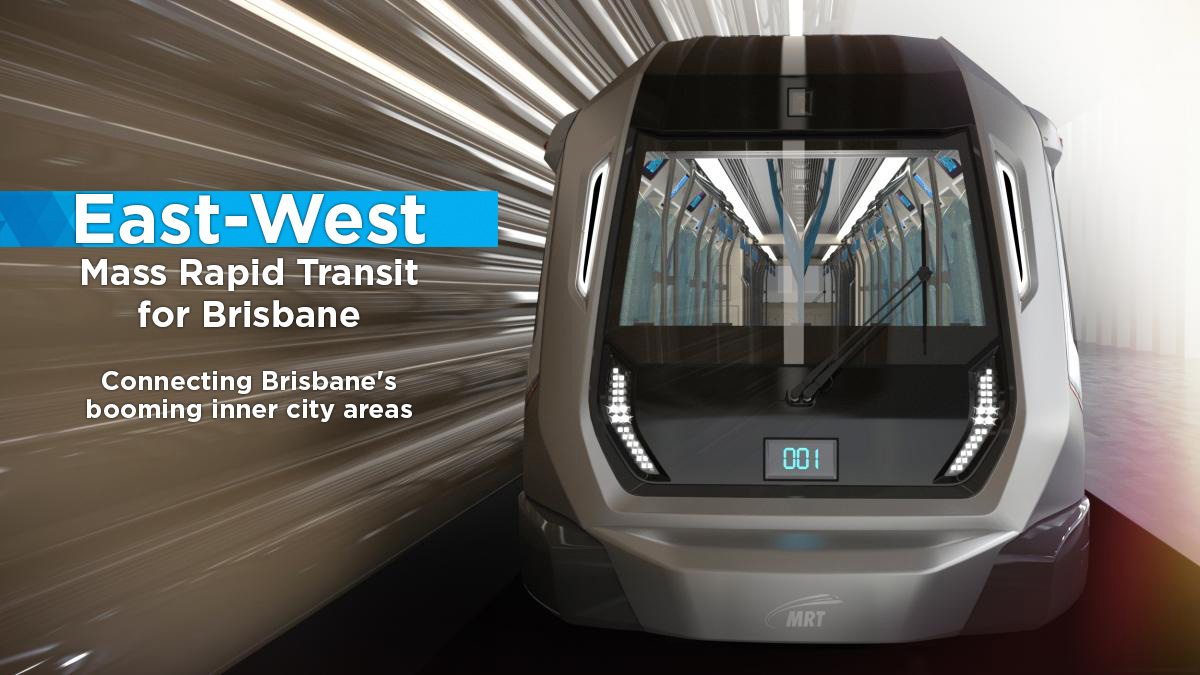
Opinion: Now is the time to plan a useful public infrastructure project that will benefit Brisbane into the long term. Short term thinking on infrastructure planning should be weeded out and bipartisan convergence of mass transit planning from all political parties is needed.
One of the most critical infrastructure projects that we believe Brisbane needs, along with Cross River Rail and the planned Brisbane Metro is a new high frequency East-West mass rapid transit line to connect Brisbane’s burgeoning inner city growth areas, otherwise our surface streets will see overwhelming car and bus gridlock within the next decade.
The dawn of the 21st century has seen Brisbane transform the way we build our housing. Once allowed to sprawl as far as the Taylor Ranges to the West and to Moreton Bay in the East, Brisbane is continuing to build upwards and attached, infill dwellings now account for most of new greater Brisbane dwelling construction.
This new type of densified growth has notably been concentrated along a 10km East-West axis. Growth now follows an East-West path of desirability along the snaking Brisbane River.
The East-West Mass Rapid Transit
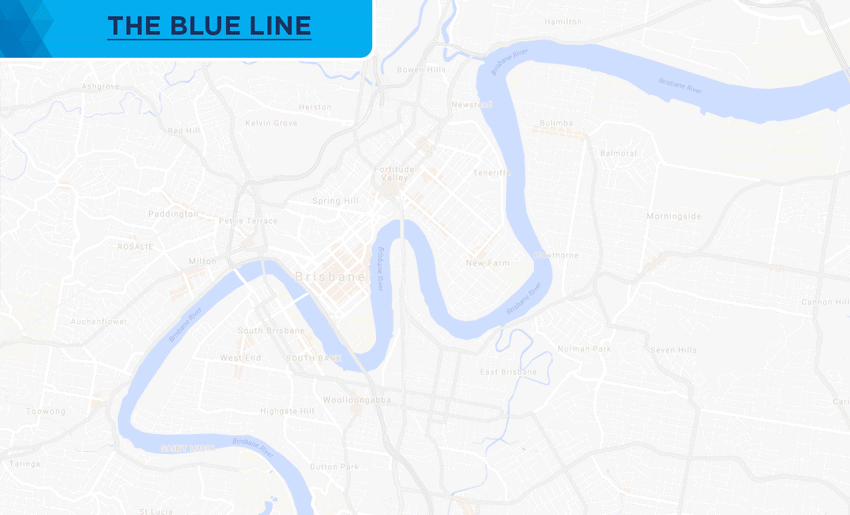
Interactive Map
Zoom into map to see possible route alignment.
Station Directory
Click on stations to see more information.
East-West mass transit explained
- A 12.8 kilometre underground driverless metro line
- x4 underground river crossings
- x15 underground stations
- Target capacity of around 40,000 customers per hour, similar to other metro systems worldwide
- Linking Queensland’s largest university to the rest of the city
- Finally providing Northshore Hamilton with access to mass transit
- Linking Brisbane’s highest density areas, most of which have no access to mass transit

Using an overlay of Brisbane Development Map data, we can summarise that around 43,400 dwellings have been recently completed, under construction, proposed, approved or mooted within a 450m radius of fifteen stations along a blue line linking the University of Queensland to Northshore Hamilton.
Using a conservative multiplier of x1.6 persons per apartment dwelling, an estimated 70,000 new residents will reside within this east-west corridor of inner Brisbane, on top of existing residents, new student residents, and new office workers.
These figures are conservative and do not include populations of student accommodation, hotel rooms, aged care facilities or new commercial space, so this final figure is likely to be a lot higher.
New world cities need long term visions and even with Cross River Rail and Brisbane Metro, Brisbane is playing catchup. The Brisbane City Council is correct to upgrade parts of the existing North-South busway into a metro line, however to avoid total gridlock and an engrained car culture of inner city areas outside of this existing Busway, we need to properly service additional high density growth areas with a dedicated high frequency underground metro line.
A similar, much longer driverless system which is currently under construction in Sydney is explained below:
Costs
Deriving the costs of a barely mapped out system with so many potential variables is almost like looking into a crystal ball. However by analysing a whole range of proposed, under construction or recently completed metro systems in the world, we can begin to understand the costs per kilometre in order to ascertain a rough total figure for a 12.8km East-West metro for Brisbane.

The three closest systems with similar market conditions and labour costs to that of Brisbane are Sydney Metro, Singapore’s Thomson MRT Line and Singapore’s Downtown MRT Line. When averaged, these projects represent an cost of $412 million per kilometre.
Using this vague but straightforward method of comparison, we can predict that if using similar driverless metro technology and construction methods, similar to that of the Sydney and Singapore lines, a 12.8km East-West Metro connecting Brisbane’s most dense areas would cost somewhere between $4 to $6 billion (exact averaged figure is $5.2 billion).
Funding
With traditional funding methods lethargically inhibiting vital existing projects like Cross River Rail from commencing, such a project of this nature requires non-traditional, innovative sources of revenue that utilise value capture, the private sector and public money.

Value Capture
Value Capture is method of infrastructure revenue raising which identifies and collects an equitable portion of the increased land values caused by new infrastructure improvements. For example, new property wealth that is generated as a direct benefit of a nearby mass transit station would be tapped in order to help fund and spread increased wealth to the broader community.

A report by Aecom and Consult Australia explains that value capture is not a new tax. It allocates the uplift in benefits from public investments in ways that do not affect current or future tax rates.
The report highly recommends the use of value capturing mechanisms for new Australian infrastructure. First used in North America in the 1960’s, Australia has never really used this type of funding method, instead relying on higher taxes, public handouts and new levies.
International experience demonstrates that well planned public transport can increase land values by up to 50% and can contribute substantial portions of the overall cost of new infrastructure.
The Denver Union Station redevelopment captured $135 million of its $446 million cost (roughly 30%) of the total capital cost through value capture.
Another example of value capture, this one an extreme case is the MTR in Hong Kong, which is 100% funded by property development gains. MTR Corporation acquires land for new stations and development sites around stations are then leased at higher values with new mass transit infrastructure in place. Although Brisbane has no where near the density and population levels of Hong Kong, our densifying inner city areas most certainly can allow a good enough percentage of capital costs to come from the value capture method.
PPP (Public Private Partnership).
While PPP ventures of large scale infrastructure projects in Queensland have had a rocky and controversial past due to the collapse of two roadway consortiums in Brisbane, Pubic Private Partnerships of public transport infrastructure overall has been quite successful, with Goldlinq Consortium being a good example of this success.
In it’s first year of operation, the 13km Gold Coast Rapid Transit exceeded it’s original 5.70 million forecast to reach 6.18 million trips while boosting the city’s public transport patronage by 25%. Goldlinq is now part of a 7.3km expansion project which will connect the light rail system to heavy rail.
An East-West line, taking people where they want to go will equally be as successful and could attract domestic and international corporations like Singapore’s successful MRT corporation to invest in such a line.
Public Bond Raising
Government issued bonds for infrastructure investment is nothing new and has been used to build public infrastructure projects throughout the world.
The governing authority in charge of establishing a hypothetical investment vehicle for East-West Rapid Transit could in essence create an easier method for the public to invest in fixed rate government bonds.
Through the use of technology which is largely available to everyone such as a smart phone application, everyday people could be enticed to invest into government treasury bonds which are a predictable, long-term source of income rather than lower interest term deposit accounts. Additionally, these infrastructure bonds could be issued as tax-exempt bonds which would make them a highly attractive investment for a lot of people.
It starts with an idea
Brisbane is at a crossroad. We are fast approaching a critical mass of population within our inner city areas to sustain a more serious long term form of mass transit. With the inevitable population growth in areas mentioned earlier, in 10-15 years time politicians will be calling for a project of this nature. So why wait for when we actually need it to start planning it?
Long term infrastructure should not be seen as a ‘distraction’ to current projects like Cross River Rail or Brisbane Metro, but more of a sustainable investment and careful way of planning for the needs of tomorrow so that one day we won’t be scrambling at the 11th hour to cure gridlock problems and pay higher amounts for shorter construction periods.
If a hypothetical project like an East-West Mass Rapid Transit system was ever contemplated, it should utilise innovative but calculated methods of funding, so that it doesn’t cost the world. More importantly however, such a system should absorb good ideas from successful projects across the globe.
As for the future, your task is not to forsee it, but to enable it.
– Antoine de Saint Exupery, poet and pilot (1900-1944)


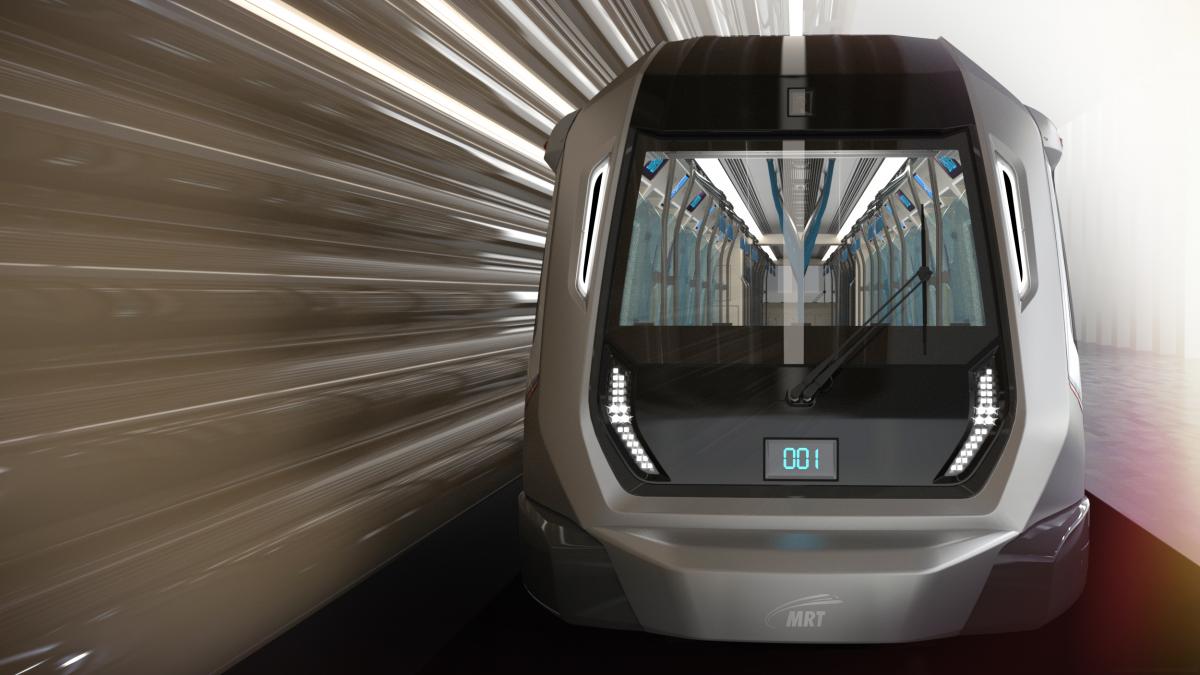
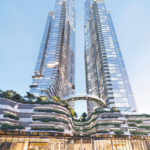
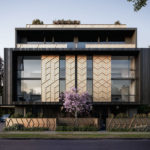
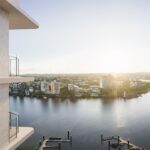
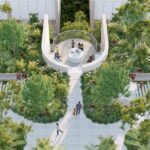
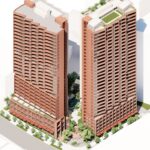


I think the Brisbane metro in its current form is a waste of money and time. Reallocating the heart of the bus network is only going to reek havoc on the rest of the bus system. The bus way should stay unchanged and the metro system should be an all new, cutting edge, underground transport network – like the London tube. With connections to the rail and bus network in places that will make a difference, such as buranda station in the south, Milton or Indooroopilly in the west, and Bowen Hills or herston in the North.
A transport connection to Hamilton is a great idea and really needed – I’d go one step further and have a station at the proposed cruise ship port.
When you see that blue line the first thing that jumps out is we had that option on the table with ALP with their light rail. It just gies to show that there has always been a party with the big ideas and the other is always lacking – locally, state and federal.
The metro was always about delivering a MT option to placate voters while also doing the bare minimum. The metro wont take cars off the road as the bus riders have already ditched the car.
I do not agree with the underground option. Why drive the activity underground when we can have a bustling & vibrant street?
At the last election, the Greens actually had the best policy of all three parties. While the LNP’s metro proposal is ridiculous, short sighted, inefficient and unproductive, Labor’s light rail plan is also shortsighted and provides minimal benefit for the substantial cost of the project. The existing road network just isn’t really suitable for modern light rail to be added in on top.
I actually believe that the LNP was going to propose converting the busways to light rail, but as Labor came out days earlier also proposing light rail, they panicked and rebranded as a ‘metro’.
We are better ‘skipping’ the capacity level of Light Rail and going straight to full-on metro. This is what Brisbane needs and it’s more suitable given our geography and urban development
ALP’s would have needed a complete rethink of the Ann St & Whickam St – however, to have the opportunity built on the back of a ground level LR option would be a dream result.
Not many cities have the opportunity to sit down and reconfigure 2 major inner city roads which would be bundled in with the LR costs & also increase the value capture potential. By undergrounding the system we still have the poor streetscape above – unless the whole project also removed car lanes above and converted them to wider ped paths, cycle lanes & public open space.
The ALP option would have set the bones and allowed for branching systems
The comment about the ALP proposal was spot on, and it was an aboveground visible system, that had great expansion possibilities. The cost is a further factor in the ALP proposal, based on current construction cost in Sydney of around $200M/km it would be half the cost of this proposal!
I would like to see what we could buy in Brisbane for $5-6 billion and light rail / super bus services.
That could cover the whole city and run above ground, at ground level or underground.
There is definitely a need for a decent PT connection between Newstead-Bulimba and Bulimba-Northshore, perhaps even running into the Doomben Line and ending at Eagle Junction for connections.
So much to do – yet such a lazy State Government.
Looking at this route, I’m inclined to think this is a much better route than the proposed Metro. For a start, it doesn’t have the same level of services that Metro is replicating.
I think an at grade service would generally be a better option. It’s cheaper and provides more visibility for everyone. It would have to be separated from general vehicle lanes, but if we’re serious about making Brisbane more liveable, we do need to discourage cars from driving in the inner-city. A bridge to St Lucia would also enable people to walk or ride to UQ, which a tunnel wouldn’t. However, going underground further downstream may be necessary, given the necessary bridge heights.
While I agree totally with your prescription – we need to be thinking ahead and planning for a metro system which can effectively serve the city – but the costs you’ve outlined are far below what would be realistic. The reason for this is your station spacing. Station construction is a massive proportion of the costs of an underground metro system. Your proposed stations in the central section (Gasworks-Montague North) are about 600-800m apart. Modern metro systems should typically have 1.2-1.6km spacings, with possible exceptions for river crossings or major trip generators. This means you should get rid of the Chester Street and Centenary Place stations and combine the Boundary Street and Montague North stations into a Mollison Street station.
Further, there’s two other items which need to be considered:
1) western extension from UQ to Indooroopilly station (for transfer to the QR network)
2) provision of a stabling and maintenance facility. The easiest area is in the Cullen Avenue/Curtin Avenue area of Eagle Farm, near the Northshore Hamilton terminus, but consideration should be given to a location further out in Meeandah to accommodate further employment intensification in this area.
I find it amusing that we are pushing for infrastructure in real terms that cannot be afforded by the government. Let’s stop comparing against the London tube which was built a hundred years ago. Fact of the matter is, there is negative ROI in developing something like this. Not saying this isn’t a good idea. But for a city like Brisbane it is simply not feasible. High labour costs negate this ever being a cost efficient idea. NSW is Australia’s only trillion state with a surplus and projected surplus. So let’s face reality.
I disagree. It might be expensive, but if a government wants to do something, they’ll find the money. We found $9.5 billion for the Clem Jones, Airportlink and Legacy Way tunnels, which all have negative ROIs. We found $7 billion for the SEQ Water Grid, most of which is generally unused.
All of this infrastructure is expensive, but it’s good to have it. It makes our lives better.
If the government wants to do it, it will find the money over multiple years.
And to my point you’ve provided the best example of build it and it was a complete financial disaster. For one it was public and private funded copartnership which swallowed up the company in charge of building it. The whole build and they shall come is not a relevant argument. Plus building a metro is a whole different kettle of fish, there is a very small populous that will and rationalise the service and the overall project cost. We aren’t talking about cities like Sydney or Asian cities where there is a tight cluster of population that rely heavily on public transport. Brisbane I’m sorry to say is still very decentralised, and still far more convenient to drive. I’ve lived in major cities around the world and Brisbane doesn’t have a high enough demand to justify this. Unless you get super funds or overseas investors to fund and run this which would only complicate matters further.
This may well be a very sensible idea, and identifies a corridor part of which (Bulimba – Teneriffe – CBD) The Greens focused on in their campaign for local government elections.
I say “may well be” because, yet again, in line with Big Politics thinking, a significant piece of infrastructure is proposed in isolation from an overall, integrated transport strategy. What Brisbane really needs is a plan that maximises the efficiency, sustainability and convenience of the public transport network. This would, in all likelihood, start with a grid-like anywhere-to-anywhere connected transit network, as promoted by Jarrett Walker (see humantransit.org). Actual frequencies are determined by the need for connectedness between perpendicular routes at each node.
The demand for routes in such a network should be estimated, not on the results of conventional four-stage transport models (that do not work well outside the realm of conventional roads and private vehicles), but on future TOTAL (not derived transit) trip matrices assigned to the proposed network. This level of modelling is only of value in determining theoretical service frequencies on various parts of the corridor, which are in any case likely to be most useful if they are the same for its whole length.
Only after the complete network has been designed in concept should massive pieces of infrastructure to meet the demand on specific corridors be posited.
Let’s not continue with the idea that integrated networks can somehow appear between massive chunks of infrastructure. Our need is, first, for access, then for services where necessary, then for infrastructrure if it’s needed to deliver those services.
Punters who say this sort of initiative is a waste of time, money and effort are living in another dimension and probably don’t have a passport.
Brisbane isn’t special – that’s why this sort of initiative is key. Interim solutions will not suffice.
When the London Underground first opened in 1863 linking Paddington and Farringdon one might have considered it then to be a waste… with no baseline or equivalent to compare. Competition is global and comparisons are important.
The great challenge with these large public infrastructure investments is not take economists / bankers too seriously (I’m an accountant – I get it) who continue to prove they are useless at timing infrastructure spending. Brisbane will continue to grow and put meat on its bones in commerce, education and arts. When you know the growth story you don’t go for interim solutions… you act boldly.
Brisbane needs a properly planned underground high frequency (in parts) metro system linking existing business, residential, entertainment and cultural hubs. Phased execution is key with the first lines delivering both capacity and importantly, a tangible benefit to the community that fosters good public relations. Will pave the way politically for further expansion.
I look forward to moving home at some point in the future to see that our city has grown up a bit… this sort of infrastructure will go a long way to changing perceptions about Brisbane while providing much needed infrastructure.
Good OpEd piece.
Looks very similar to the east-west mass transit system the Greens put forward at the last council election, which went widely unnoticed, despite being the best transport plan for Brisbane across the parties. But hey, what would the Greens know, they probably just want to save the trees…
Excellent rationale for the alignment of a future mass rapid transit system, but why only an underground solution? Why not a mixed above and below-ground solution, like Vancouver’s Skytrain or London’s (fully grade-separated) Docklands Light Rail. Showcasing sunny Brisbane with sections above ground would help with tourism, much like the ever popular CityCats. Plus an above-ground train would negate the need for deep underground tunnelling and train stations necessary to clear under the Brisbane River. New bridge crossings for the rapid transit system would be introduced, which would also include walking and cycling paths; can’t integrate that in an underground tunnel project!
The Blue Line is a good and obvious first start. This alignment has been indicated many times in previous studies: BRIZTRAM 1997 (QLD), Smart Cities 2007 (QLD), Lord Mayor’s Mass Transit Investigation Taskforce 2007 (BCC), Draft Connecting SEQ 2031 2009 (QLD)… And through these transport studies and their relationship and influence on land use planning, have informed BCC’s City Plan and key neighbourhood renewal plans (e.g. South Brisbane Riverside, Newstead North) to encourage higher density developments to support future mass transit at those locations (integrated land use and transport planning!). Also importantly, the Blue Line alignment minimises duplication to Cross River Rail’s (QLD) alignment to relieve the Merivale Bridge bottleneck which would unlock increased train frequencies across SEQ.
[And then we have side-studies distracting attention and funds away from Cross River Rail and an inner-city mass transit system… BaT Project (QLD), Suburbs2City Buslink (BCC), Brisbane Metro 2016 (BCC), Public Transport in SEQ 2012 “The Cleveland Solution” (SEQ Council of Mayors)]
So a mass rapid transit system for Brisbane is coming! But when? 2031? 2041? 2051?
THE Qld state politician, who could genuinely pick-up, run with and deliver this scale of project, for Brisbane, isn’t even yet a twinkle in their father’s eye! To be honest, IF the state/fed backing was there, sure, I think the BCC would embrace it quick as.
Great plan, finally a vision for taking Brisbane transport forward rather than delivering what is already required. Fancy delivering infrastructure as it is needed not decades late – well done and hope you can influence its progress – Brisbane needs it and the people should demand it.
This is a fantastic study, I recently completed a similar research proposal looking at SEQ as a whole. You can find that at http://www.scottyvalentine.com/flexurban
I really appreciate the work you’ve done as you’ve also managed to get into the areas I didn’t have time to flesh out. Great work!
What an interesting proposal- well worth calling a moratorium on the inevitable knee-jerk politicking to allow time to explore the concept further.
What strikes me as having the most potential is not the proposed route shown in the centre of the growth area, but the thick blue line that marks the southern boundary of this zone shown in the sixth slide. The preferred route provides four under-river crossings, but the more southerly blue line crosses under the meandering river six times and links seven of Brisbane’s riverfront peninsula suburbs: St Lucia, West End, CBD, Kangaroo Point, New Farm, Bulimba and Hamilton.
This one piece of infrastructure would do the job of six new cross-river bridges. The direct east-west public transit link created would be so quick and direct compared to current circuitous surface routes, that only the most rusted-on motorist would choose to bring a car to town.
In terms of feasibility, I would imagine the St Lucia/ West End / CBD link could be built as the first stage linking the city’s two biggest travel nodes. Once the proposed Blue Link had demonstrated its worth we might even consider peninsula-hopping further south-west to connect the possibly under-developed riverside suburbs at Yeronga, Long Pocket, Graceville, Fig Tree Pocket and Jindalee.
In all investigations of north-south or east-west transport options , we should not be distracted from our pursuit of the holy grail: creating a new entry into the CBD that would allow us to blow-up or repurpose the Riverside Expressway.
It’s incredibly refreshing to see others have the same thoughts as I had several years ago. After travelling the globe and living in cities such as London and Beijing, I came to appreciate and love the Metro. On a map I had roughly drawn an East-West route of Brisbane, not much dissimilar to this article, but also connected the airport and the Brisbane Tennis Centre. Let’s face it, a Brisbane Metro is inevitable. The problem is we need it already, and the delay on the Cross-river rail concerns me.
Thie metro line should terminate and originate from Skygate and continue to Indooroopilly Shopping Centre from UQ with a new inline interchange for buses at Indooropilly SC. A stop can also be created at Indooroopilly station. This station should be moved further North to where Bunnings is now located.
Yes I agree but it would be better if it doesn’t just stop at Indooroopilly and it goes past the Walter Taylor Bridge to reduce traffic on that bridge. So Chelmer residents can catch another mode of transport to Indooroopilly Shopping Centre, and then on to Taringa then back to St Lucia to connect with UQ. It would be beneficial for the southern suburbs!
It would be even better if that metro went down to south of the Walter Taylor bridge because the two lane bridge is always congested in the morning and afternoon, residents take the train but we need another way of transport. If the metro is built, build it out to Chelmer!
It would be even better if that metro went down to south of the Walter Taylor bridge because the two lane bridge is always congested in the morning and afternoon, residents take the train but we need another way of transport. If the metro is built, build it out to Chelmer!
Could also use something like the SMU-220 but powered at ground level and do london-underground style tunnels so it’s cheaper.
Good point it may need to criss cross the river at check we as well as the traffic bridges are at a choke point as well!
Очень актуальные новости мира fashion.
Исчерпывающие события самых влиятельных подуимов.
Модные дома, торговые марки, высокая мода.
Новое место для модных хайпбистов.
https://whitesneaker.ru/
Any plans to refresh this proposal? There is an election and Olympics to consider now…
I think both ends need to finish at public transport transfer points (e.g. Doomben Station prior to going to Northshore, and going via Toowong Station prior to UQ).
Agree that we need a line and it should end with interchanges.
IMHO it would make sense for the north to end with a new interchange station with the Airport line at Skygate.
Keep the line straighter and create an interchange at Indooroopilly without going to UQ.
But also get building a second line ASAP. NWTC to Yerongpilly via ashgrove, rosalie, west end, UQ, etc
If we are going to build one true metro line we should be planning it as part of an integrated and optimised future network.
z948lg
0ad51o
byp3ya